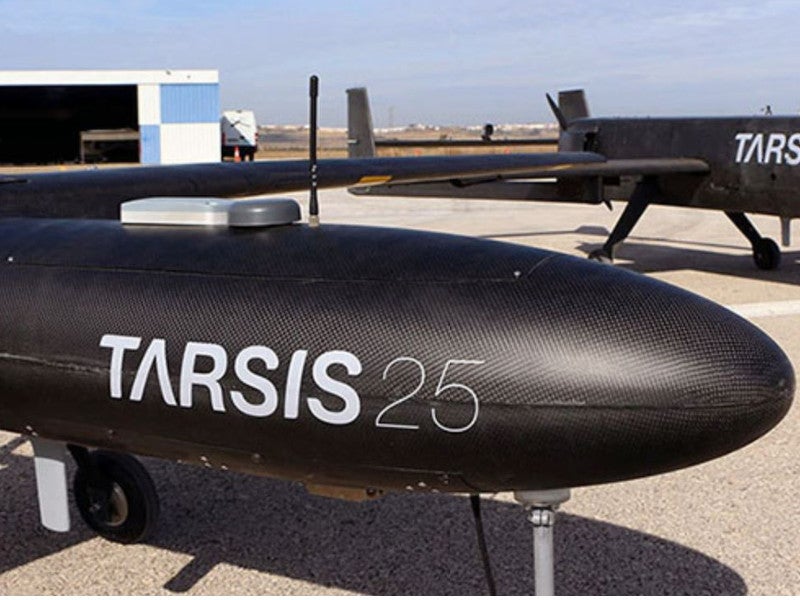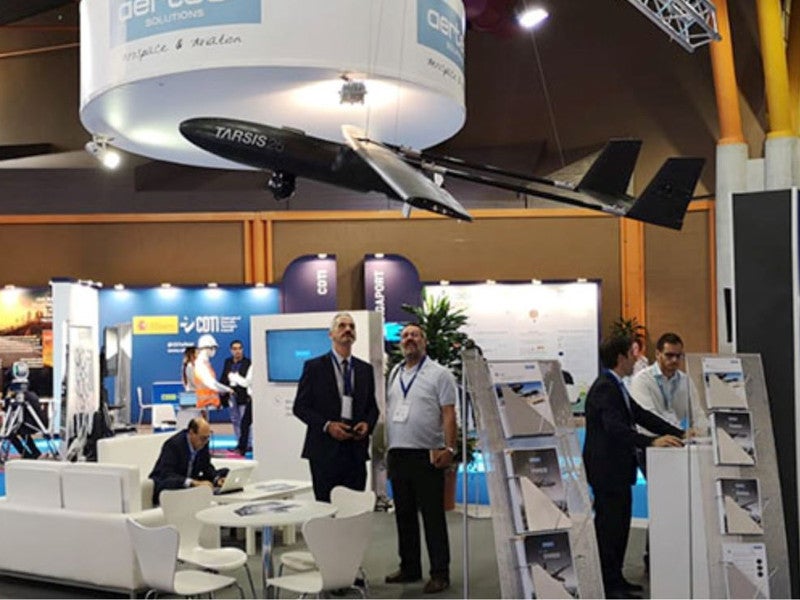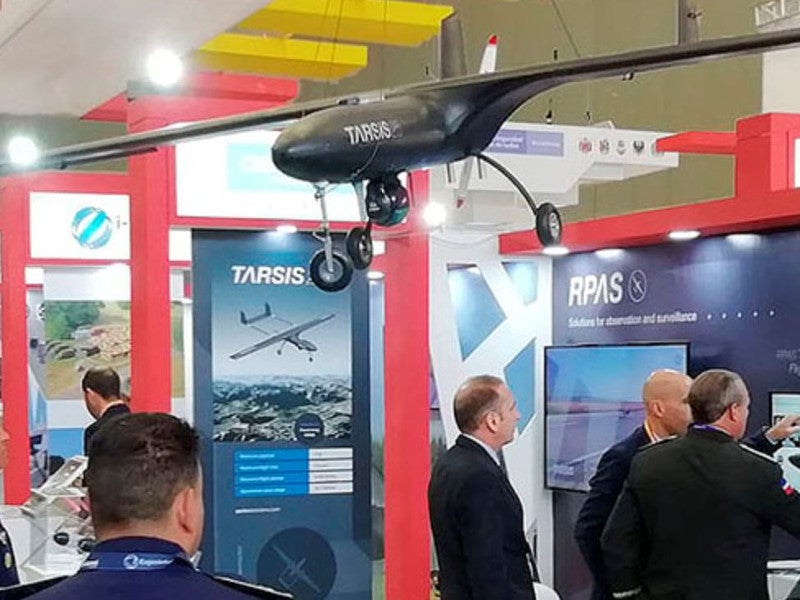Tarsis 25 is a light tactical unmanned aerial vehicle (UAV) designed and developed by Aertec Solutions, a global consultancy and engineering firm specialised in aeronautics and defence systems.
The drone was unveiled at the sixth international defence and security fair Expodefensa, which was held at the International Business and Exhibition Centre in Bogota, Colombia, in December 2017. It was exhibited during the Expodefensa trade show held in December 2019.
The UAV has been developed for surveillance, monitoring, and target recognition missions, along with light combat applications. It is a remotely piloted aircraft system (RPAS) solution available in multiple payload configurations.
Tarsis 25 UAV design and features
The fixed-wing Tarsis 25 UAV features a twin-boom configuration. The fuselage is attached with a high-mounted wing, which is connected to the tail assembly through two longitudinal booms. Either end of the tail section is attached with a vertical stabiliser.
The tactical drone is a high-end class-I RPAS and provides high-performance during challenging missions.
The drone measures 2.5m-long and 0.89m-high and has a wingspan of 4m. It has a maximum take-off weight (MTOW) of 25kg. The vehicle offers high load integration capacity of up to 5kg and an endurance of six hours.
Tarsis 25 UAV involves a minimal operation from the runway and can also be deployed by using an optional catapult launching system. It is also equipped with an emergency parachute recovery system. The safety and security of the operations are supported by a back-up satellite communications system.
Tarsis 25 UAV payload details
The Tarsis 25 UAV integrates gyro-stabilised electro-optical/infrared (EO/IR) cameras for intelligence, surveillance, and reconnaissance (ISR) missions. The sensors are capable of capturing imagery and automatically tracking targets during day and night. The UAV also incorporates video-tracking and geo-tracking payloads.
In-built cameras of the UAV produce real-time high-definition (HD) videos in the visible and infrared spectrum. The images can be analysed to provide the highest possible level of detection and tracking.
Other integrated payload sensors of the UAV include automatic identification system (AIS), multi-spectral cameras, and topographic cameras. The vehicle has a payload capacity of up to 5kg.
The unmanned aircraft can also carry Aertec semi-active laser-guided micro missile. Each missile weighs 5kg and can engage targets at a maximum range of 5km.
Navigation and control
An optimal flight path generator is used to deliver an ideal trajectory with respect to a pre-configured reference point. Interpolation of altitude and flight plan patterns, with modes enabling the vehicle to return to its base, keep the movement in check.
The control and guidance systems enable the UAV to perform linear and helical descents and ascents along with emergency and tracking manoeuvres. Waypoints configuration, commanded loitering, and constant altitude flight plans ensure the movement of the UAV in a designated path.
Tarsis 25 UAV is controlled by a portable ground control system (GCS), which can be reconfigured to meet the user’s operational needs. Manned by two operators, the GCS features two interchangeable workstations with display units.
The GCS is powered by the main power supply and can also use batteries for autonomous operations.
The control station ensures mission planning, manages communications with the platform, and controls payloads and onboard systems on the UAV through communication systems and data links.
Communications
The aerial platform includes a primary real-time video or data link that accommodates the communication frequency facilitating local needs. It uses an omni-directional type of antenna with an operational video range from 40 to 200km.
The optional secondary data link of the system uses a satellite communication link. The redundant low bandwidth communication system ensures an unlimited operational range.
Tarsis 25 engine and performance
Tarsis 25 UAV is powered by a 50cc engine driving a two-bladed propeller mounted at the rear fuselage. It has a cruise speed of 100km/h and can operate in adverse weather conditions.
The vehicle has an operational range of 150km and can reach a maximum altitude of 4,000m above sea level (MASL).






